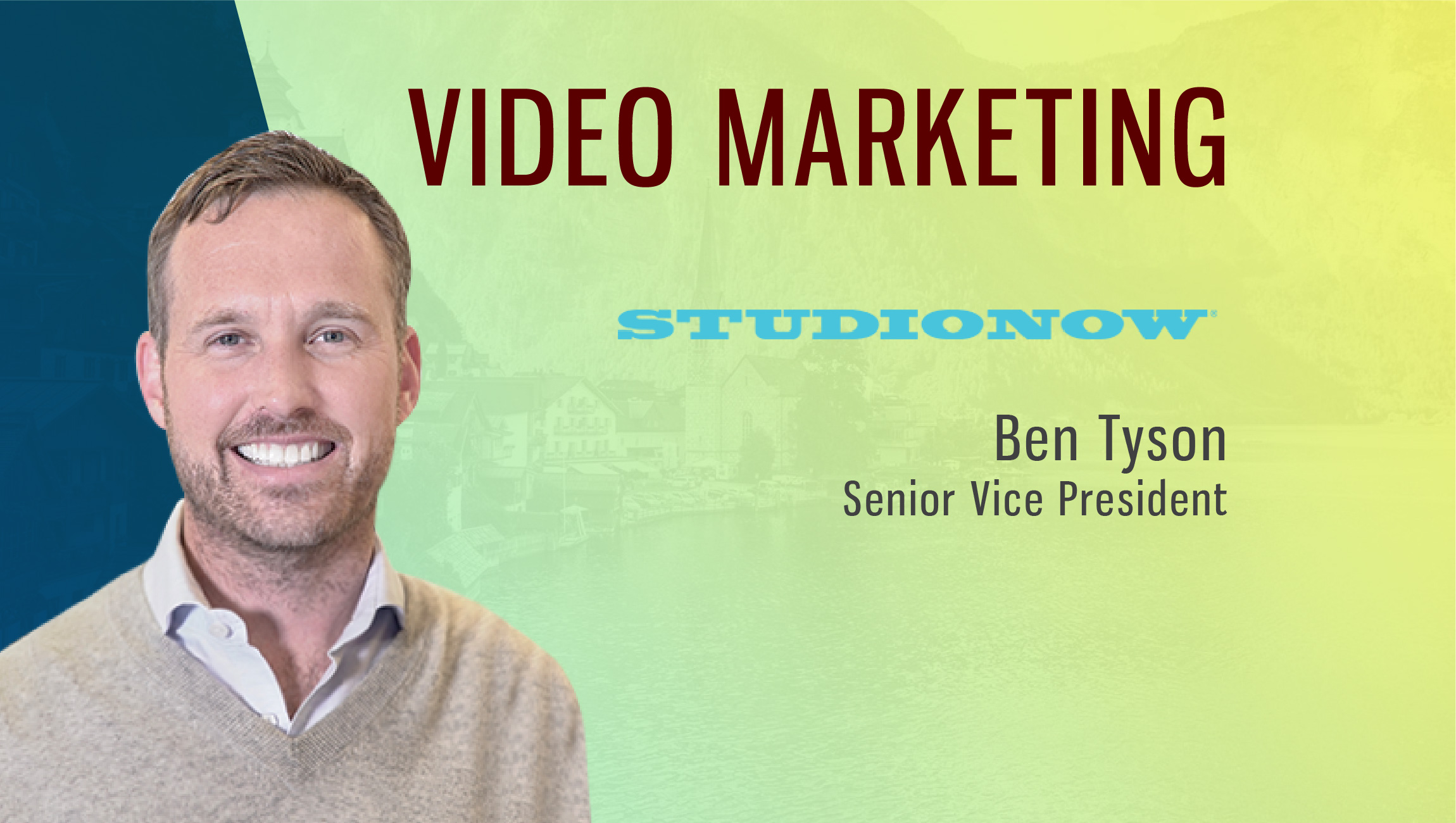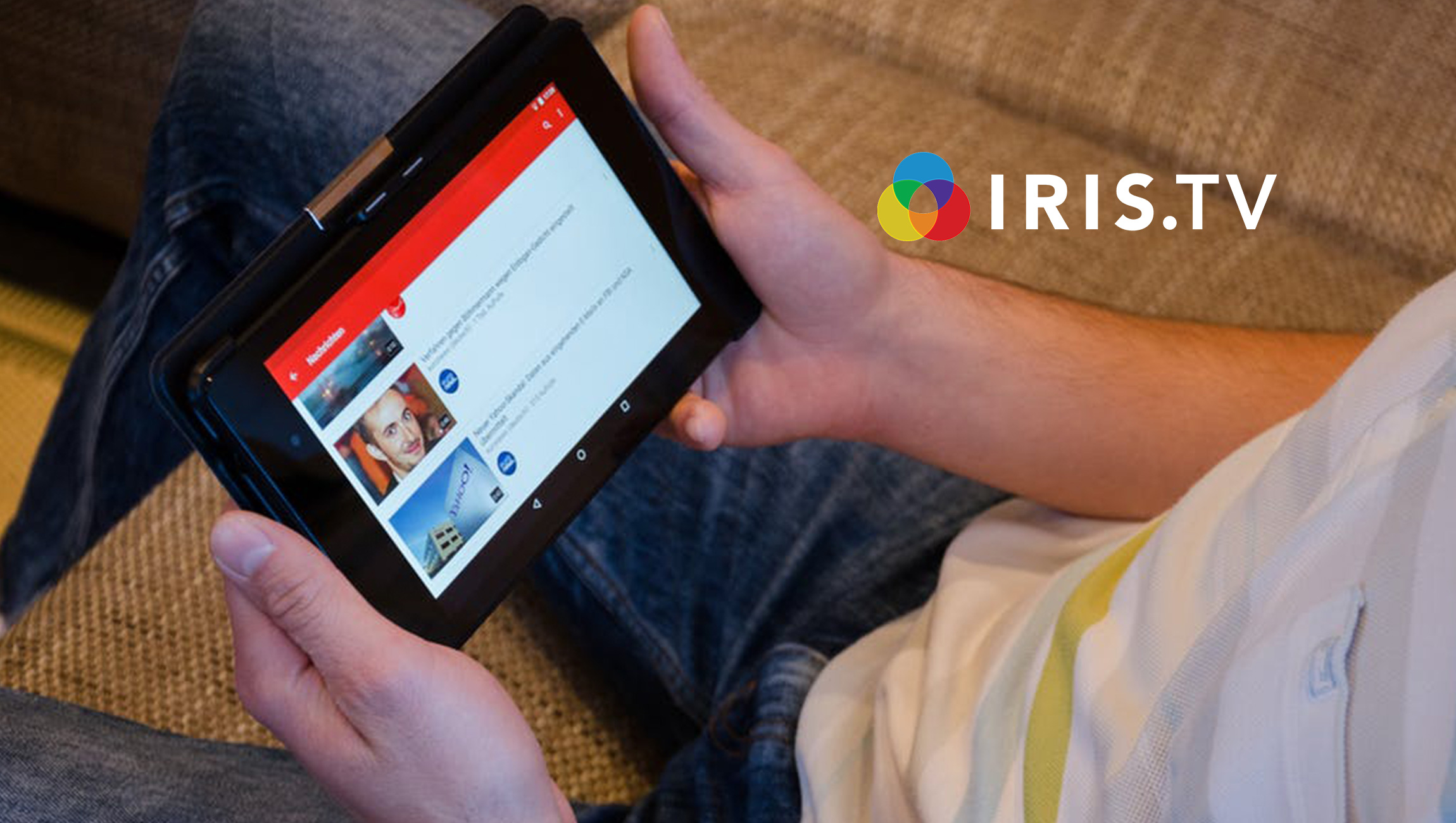Ben Tyson
Senior Vice President, StudioNow
In their current state, video marketing platforms are gaining massive traction by virtue of a marketer’s need for analytics and measurement. To better understand this dynamic state of video technologies and the role of marketing teams in creating mobile-first video personalization, we spoke to Ben Tyson, Senior Vice President at StudioNow.
Tell us about your role at StudioNow and the team/technology you handle.
At StudioNow, we aim to make content production a more seamless process for everyone, from what I call project intake down to the approval phases. We provide a broad range of custom solutions for our clients and collaborate transparently with both brands and their creative agencies to ensure projects are on time and on budget. The StudioNow platform allows not only our services teams but our marketing and agency clients to connect with the StudioNow Creative Network, offering access to over 10,000 highly-vetted, creative professionals all over the world through an online bidding process. Our clients can shoot anywhere around the globe, manage a full range of production projects and have visibility into all their project data in one, cloud-based platform.
As the SVP of Strategic Services, it is my responsibility to architect the right solution, which includes not only our Platform but the entire production technology stack, production services team composition and its overall capabilities. When all those elements are blended together for content production (which is, inherently, not very simple), we’re able to help clients execute across any content production project based need. My job requires me to balance this work with building and maintaining relationships with clients. When it comes to our existing clients, I’m primarily focused on keeping up with the pace of their business – which is easier said than done. Things are changing so quickly in their business and throughout their world, so I’m always working to prove StudioNow’s value as a partner, allowing us to evolve and change with that client. This could mean driving a different use of the technology than was originally intended, or tweaking our model to better serve them.
What is the State of Video Marketing technology in 2018? What sets StudioNow apart from the competition in the tech industry?
In its current state, much of the industry’s focus is on analytics and measurement. So much of a focus that no one is thinking about how the content is actually created. The system for creating content has been the same since the Mad Men days with an agency, production company and director. At StudioNow, we have been thinking about what the content creation process will look like in the future.
The real problem with video creation and production execution are the layers of mark-up that does not allow creatives to effectively interface with potential clients and buyers. At StudioNow, this is the issue that we’re trying to help solve: transparency into content production process across the entire slate of content collaborators from brand to agency to production partner to drive better content (faster, cheaper, better).
We aim to be the “system of record” for enterprises, marketers and agencies, meaning everything is in one place. When everything is in one place, CMOs have the ability to place metrics against it, understand the spend and make creative pivots down the line. What’s great about our technology is that it’s not a “one trick pony.” If it’s quality you’re pushing for, we can push that within our creative network. If it’s pricing or cost-cutting you’re concerned about, we can present you with different ways to achieve the best in class pricing through our bidding technologies. If it’s speed and velocity you’re after, we help you get the right video out as quickly as possible. Most companies cannot tackle that wide a range of challenges.
How have the video technologies evolved since the time you first started in the industry?
The technology for creating video has evolved immensely. The cameras, the editing process, price points and the access to equipment is entirely different. Everything is computerized, which has made workloads easier. But, beyond the obvious innovations that have made things smaller, cheaper and easier to make, not much has changed to address the complexity of the process of actually creating content sustainably. That’s the whole problem, and it is what StudioNow is trying to solve. We’re aiming to create a different model for production that taps into a larger talent pool.
How do videos fit into a modern CMO’s martech stack?
It’s difficult to specify how videos fit into a martech stack, because they could fit in everywhere and to be honest, it’s never just about “video” thought that has been proven to be one of the most effective mediums. There’s so much happening up and down the marketing technology stack at all times, that CMOs are never thinking “video”, they are thinking “what is the best way to reach my consumer” and our technology platform helps all their collaborators from their agencies, in-house teams to freelancers do just that: focus on the content needed to reach that consumer.
Different models should and are being leveraged to produce content for social but that really should be scaling up in the next few years. We are still at the early adopter stage when you think about how brands are making content today. The innovators are out there but we’ll see massive changes in the next few years as mass adoption approaches.
At StudioNow, how do you measure the performance of videos? What steps do you take to help content marketers produce and distribute videos faster?
We leave the performance measurement up to our clients – that’s a different part of the stack. But how do we help content marketers produce and distribute videos faster? That is one of our secret weapons: we enable sheer velocity. If you were to ask me why StudioNow is winning in the marketplace and why we’re becoming indispensable so quickly, it’s because our technology helps everyone move faster. It allows any StudioNow client to stitch a project together in an unconventional, unique and nimble way without investing a huge amount in overhead to manage the content creation process, which is traditionally how it’s been done. This ecosystem enables content to be created and distributed much faster.
How should marketers prepare for mobile-first video experiences? What are the challenges in leveraging video automation tools in the marketing campaigns?
When creating a mobile-first video experience, you need to clarify what’s happening up front from the beginning versus being mysterious and waiting until the end to announce your brand. Unless it’s so sexy that people want to stick around to figure it out, be crystal clear about who you are and what you’re selling.
This should be obvious, but you also need to keep the orientation in mind. Video is vertical. Half the world will be watching on an iPhone, so I recommend creating videos in native portrait orientation. This may mean you have to do something else with the video so it works on a computer or a TV screen. When it looks like an asset has been repurposed for the device you’re using, it takes something away from it. Content that fits the whole screen is much stickier than content that doesn’t.
Leveraging video automation tools is an inventory versus placement question. Generally, if you’re going to shoot a spot, don’t just stick to one, but consider variations of that spot. Maybe you triple cast with a male lead, female lead and a lead of a different background. I’ve watched Coca-Cola do this with much success. They’ll shoot a global campaign and knock out six to twelve different versions of it all in the same production. This is a great way to test yourself as a brand.
How would you define Video Personalization- Segmentation- Optimization, and Automation at various stages of the Customer Lifecycle? How do you manage customer experiences at each level of this journey?
Looking at the customer lifecycle takes a great amount of thought. Here’s a perfect example: I recently bought a pair of shoes on Instagram. That purchase was direct – I followed the brand and bought their shoes. That video I saw while scrolling through my feed was served to me because the brand had bits of information about me, such as what I was interested in.
Brands still need a concrete roadmap that states what content to serve and when to serve it. It still takes a group of people sitting in a room deconstructing the customer lifecycle, the buyer’s journey and how to map out pieces of content to each of those. You need to have a great partner or internal capabilities to do that. That’s how you create the ability to purchase.
I would say the same for video personalization, segmentation, optimization and automation. You need to design deliverables that appeal to someone who knows and is interested in your brand. It all comes back to having solid resources, data and mapping your deliverables against those.
Although, at StudioNow, we’re not managing the customer experience at each of those levels. Since we’re conducting work with Fortune 500 companies, it’s not as relevant to us.
Thanks for chatting with us, Ben.
Stay tuned for more insights on marketing technologies. To participate in our Tech Bytes program, email us at news@martechseries-67ee47.ingress-bonde.easywp.com











